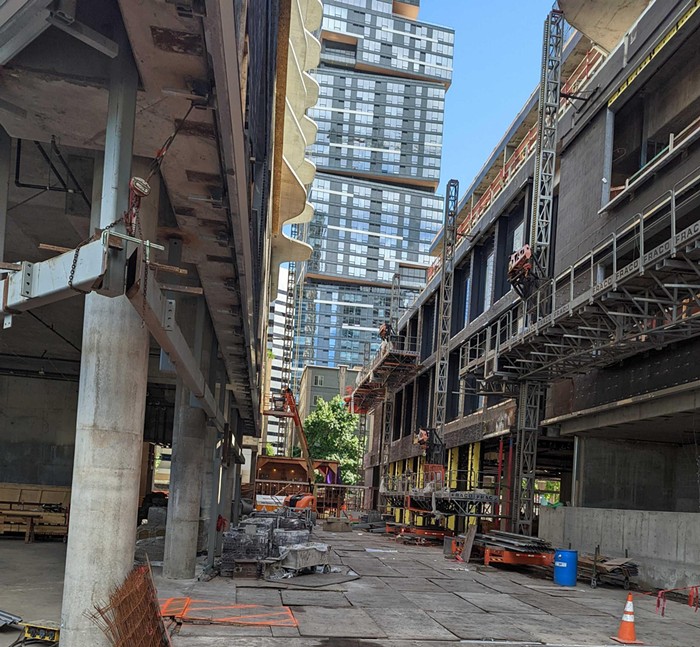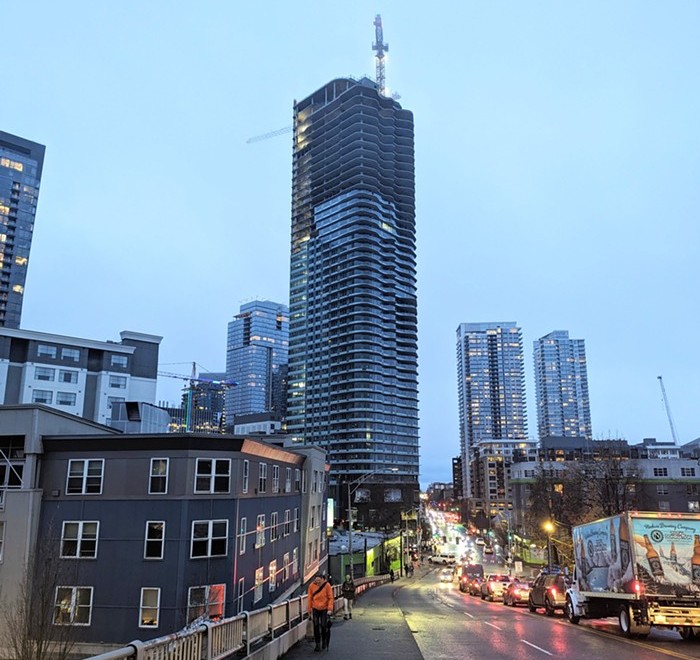
Where Vancouver BC is at this moment, Seattle is certainly heading, but by a different route. Seattle will not become another San Francisco (the most expensive city in the US) for one simple reason: We are not frozen in the past. We are building new apartment buildings and condos all over the city. The developments in Columbia City alone would stun a San Franciscan. Downtown Ballard has been transformed into a whole city seemingly overnight. But like Vancouver (one of the most expensive cities in the world), nearly none of these new or soon-to-be completed buildings are affordable. And there are no serious projects in the works to address Seattle's affordability crisis.
Seattle's commercial and real estate market has been in the flipping stage since 2014. (Some companies like Talon are now specializing in "upgrading" and flipping "second generation" buildings as a business strategy.) Staying true to the flipping stage, Seattle is producing a lot of uninteresting developments because what matters to investors most is just having a building that will rise with the rise of other values in the money-hot market. (True, some of the blandness of our new buildings can also be blamed on the middling minds that seem to dominate the Design Review Board.) But eventually our city will become saturated with expensive but uninteresting luxury condos and apartments. At this point, the heated market will not cool and prices fall back to the reality of common local incomes. (If housing prices fall sharply all of sudden, it means the whole nation is entering the kind of deep depression that eliminates the incomes needed to take advantage of those falling prices.) No, this is what will happen in the period of luxury oversupply: Prestige buildings will spark a new cycle of windfall profits.
These buildings are all over Manhattan. They are designed by world-famous men and women and, unlike what's found in the previous stage, the flipping stage, they actually involve architecture. In Seattle, large-scale architecture is mostly confined to public buildings like the Downtown Library or the University of Washington Station or Olympic Sculpture Park. We have not reached the prestige stage yet. But Vancouver BC has, for the simple reason its market has been hot for longer than ours.
Kerry Gold, a real estate reporter based in Vancouver, writes:
[When completed, Terrace House] will only hold 20 homes, and many of them will take up an entire floor. The remarkable building will be the world's tallest timber frame hybrid, designed by famed Japanese architect Shigeru Ban, with each terrace designed by Cornelia Oberlander. The renderings show that the occupants will enjoy the best that Vancouver has to offer, with floor-to-ceiling views of skyline and mountains. It will join the city's growing group of prestige buildings, with prices starting at $3-million. That puts the price per square foot at more than $2,500–another project that is far beyond the reach of the city's income-earning citizen.
Another prestige building that's under construction is Vancouver House. It's by the famous Danish firm Bjarke Ingels Group Architects (BIG). BIG also designed the massive West 57 in Manhattan. The people who can afford to live in West 57 are in the same class as the those who will move into BIG's Vancouver development.

The penthouses in Vancouver House are already sold out. Believe you and me that a thousand developers did not miss this fact. Here, the much-admired laws of supply and demand do exert their force impeccably. No doubt, noted architects around the world received frantic calls in the middle of and all through the night. This is the prestige stage.
A person familiar with the project told me recently that the Vancouver House is controversial because a large number of its penthouses are rumored to have been sold to offshore buyers. There are, apparently, two main types of buyers for Vancouver's condos: foreign investors and retired boomers who were lucky enough to sell a detached house in a market that's heated by what Patrick Condon—professor of urban design at the University of BC's school of architecture and landscape architecture—describes as money "sloshing around" the world "with no good place to go." (To believe this money has not noticed Seattle is madness. I call it global surplus capital. People in market urbanist circles have no idea it even exists, so it is to them what dark energy is to cosmologists.)
Prestige buildings are perfect for this kind of money (global surplus capital) not only because they are in hot-money markets, but because architecture brings them something the elite love very much: scarcity value. Recall the fourth sentence from the second paragraph of the second founding text of political economy (what we today call economics), David Ricardo's 1817 On The Principles of Political Economy and Taxation: "Some rare statues and pictures, scarce books and coins, wines of a peculiar quality, which can be made only from grapes grown on a particular soil, of which there is a very limited quantity, are all of this description." (I will bring up the matter of statues in a moment.) With Vancouver House, the life of Bjarke Ingels—his existential substance, his birth and inevitable death—is the particular soil, the building (the wine) that few can claim as their own. If there is no death, there can be no prestige building. The universe we know will only make one Shigeru Ban, and Ban will only make so many buildings during his lifetime.
"Think of Vancouver House as a giant curtain, at the moment of being pulled back to reveal the world to Vancouver and Vancouver to the world," says the man whose one and only existence is named Bjarke Ingels. If you listen closely to this statement, it should hear an echo of a pivotal passage in Ralph Ellison's novel Invisible Man that considers the Booker T. Washington statue on the Tuskegee University campus. The monument is called Lifting the Veil.
Washington stands just behind a sitting and worried-looking young slave whose mind has never seen the light of freedom. Washington, who saw self-help as the solution to the misery and poverty that racist white America imposed on the descendants of black Africans, is raising a veil above the head of this benighted slave. But the character in Ellison's novel wonders if the veil is being lifted or lowered by Washington. Something like this is in Ingels' curtain statement. It might be opening Vancouver to the world, but at the same time, it can be seen as closing the city to its inhabitants.















